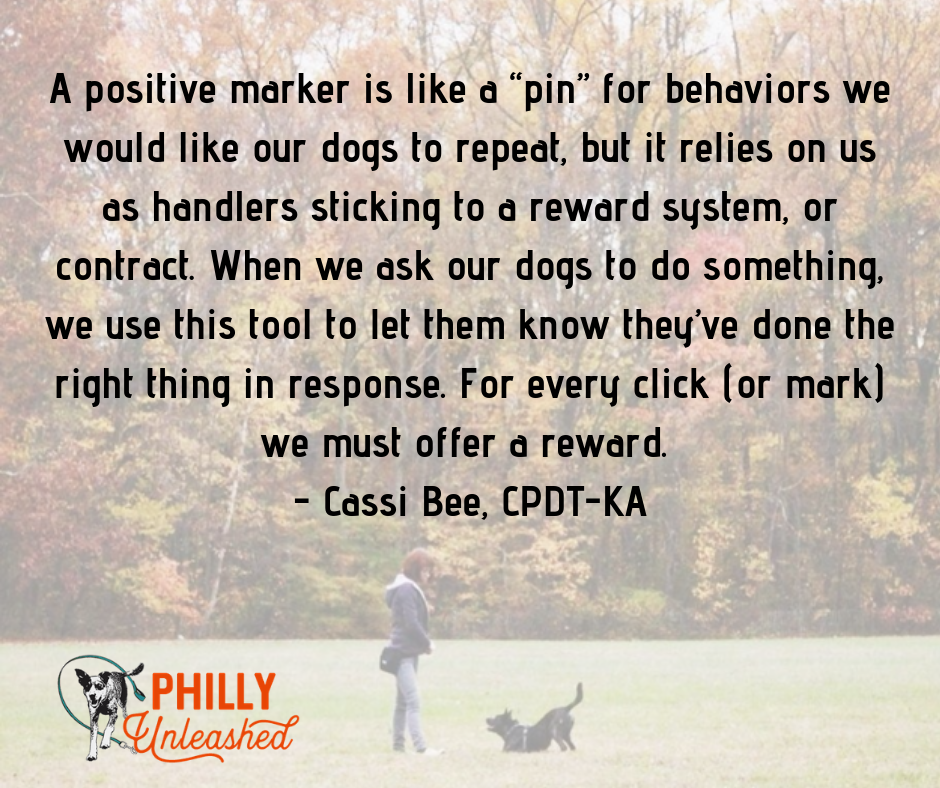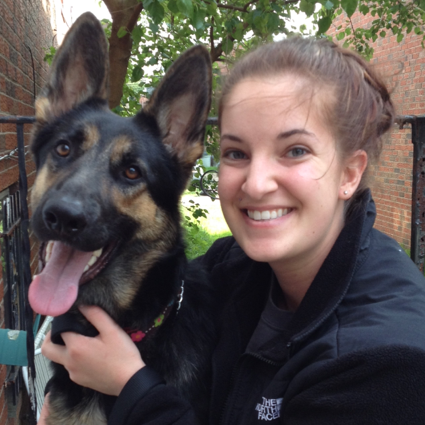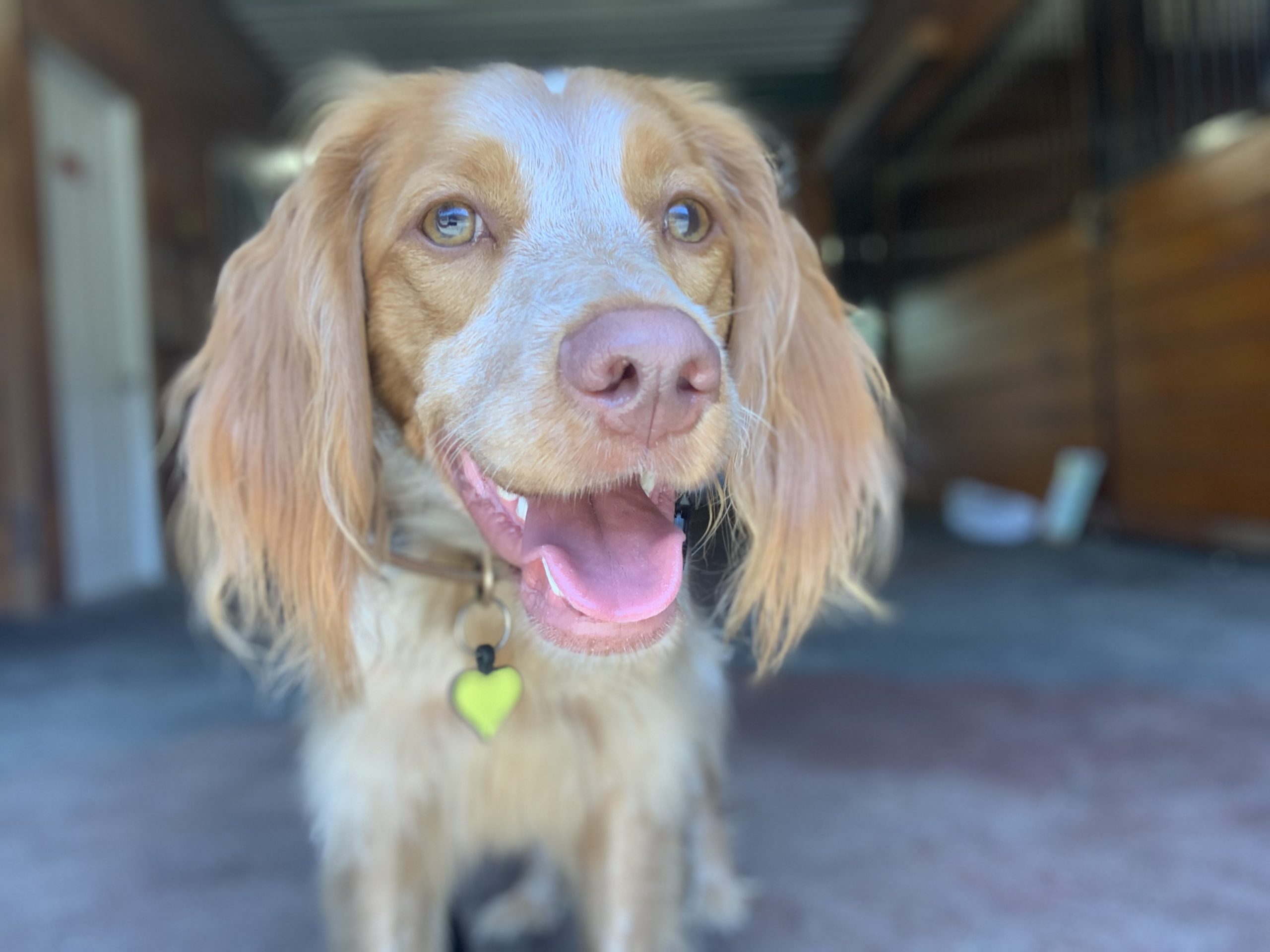Whenever we communicate with our pets — or even when we are communicating with other people and our pets are nearby — they take in all kinds of information.
Because they constantly create associations and understandings that generally inform their next, similar experiences, for better or worse, it is important for us humans to consider how we relay information.
For example, when we ask our dogs, “Do you want to go for a walk?” and take them on said walk, they start to respond to the question excitedly over time because that collection of noises (or phrase) has come to consistently mean they will be going out for some sniffs, a bathroom break, and maybe a chance to socialize – a positive association. This is because dogs are extremely associative animals, and enjoy learning about results as long as they are positive.

Similarly, when a stranger walks by and says “Hi, puppy!” our dogs can become distracted with anticipation of a greeting, even if that person has already passed, because most people stop and say hello. When a dog’s expectation is not met, they can lose faith — or the belief that something will occur — in the result, creating a negative or neutral
association. In this particular example, that can be a good thing.
For this reason, it’s critical in training to make sure you choose an effective positive marker that promises reward. There are many tools out there to help eliminate the margin of error and increase the understanding and associations our dogs build in training, such as box clickers, soft clickers, dog whistles and more. You can also use a verbal positive marker if those things feel intimidating or you’d like to work with fewer items in your hands.

A positive marker is like a “pin” for behaviors we would like our dogs to repeat, but it relies on us as handlers sticking to a reward system, or contract, most often using a food reward and/or praise for reinforcement. When we ask our dogs to do something, we use this tool to let them know they’ve done the right thing in response. For every click (or mark) we must offer a reward. Even if we click or mark on accident! Otherwise, our dogs will lose their positive association, clear understanding, and performance motivation. Eventually, both of you will lose your new tool.

Before each training session, be sure you know your goal, what tool you’ll use to mark progress, and what your dog might enjoy as reward. Then, go for it!
You can find a couple of suggestions from our group classes and private lessons below for what might make an effective positive marker along with a list of suggestions for the praise or reward to follow. Sometimes, just a small change in the way we communicate can make a big difference in our results.
Positive Markers:
- Click!
- Yes!
- Good!
- A flash of light (used often with deaf dogs)
Praise/Reward:
- Good doggie!
- Good sit!
- You did it!
- Playtime (if it will not distract them too much)
- Affection (if your dog enjoys being pet)
- Snacks and treats (especially in early stages of training)

Note: Since praise is a reinforcer, it is not recommended to use “good dog!” as a marker, but feel free to include it afterward to reinforce the behavior with a fun alternative reward! Which markers, words, and rewards do you most frequently use?
Bonus tip: A negative marker can also be useful, but only when used sparingly and with a neutral tone. Negative markers, like positive markers, are just points of information and feedback, not a punisher. I like to think of them as bumpers; they help my dog stay on track or get back to it. My favorite negative markers to use are “Nope!” “Ah-ah!” and “Try again!” — my dog, Bugsy, will always try something different if I suggest it!



So clear, so concise, and so well communicated. Thank you! Not only are these ‘good tips’ for canine-human communication. but also worthwhile reminders to any of us pet-owner of the difference between reinforcement, reward and punishment. Well said. Loved the photos.
P.S. One of my favorite phrases used to be: Love it! My Yorkie did ‘Love it!” Our Shiba Inu liked the phrase “Good Girl !” And surely she was.
In the future, would enjoy reading an opinion about the relationship between an owner’s level of stress and any impact this might have on their canine.
Comments are closed.